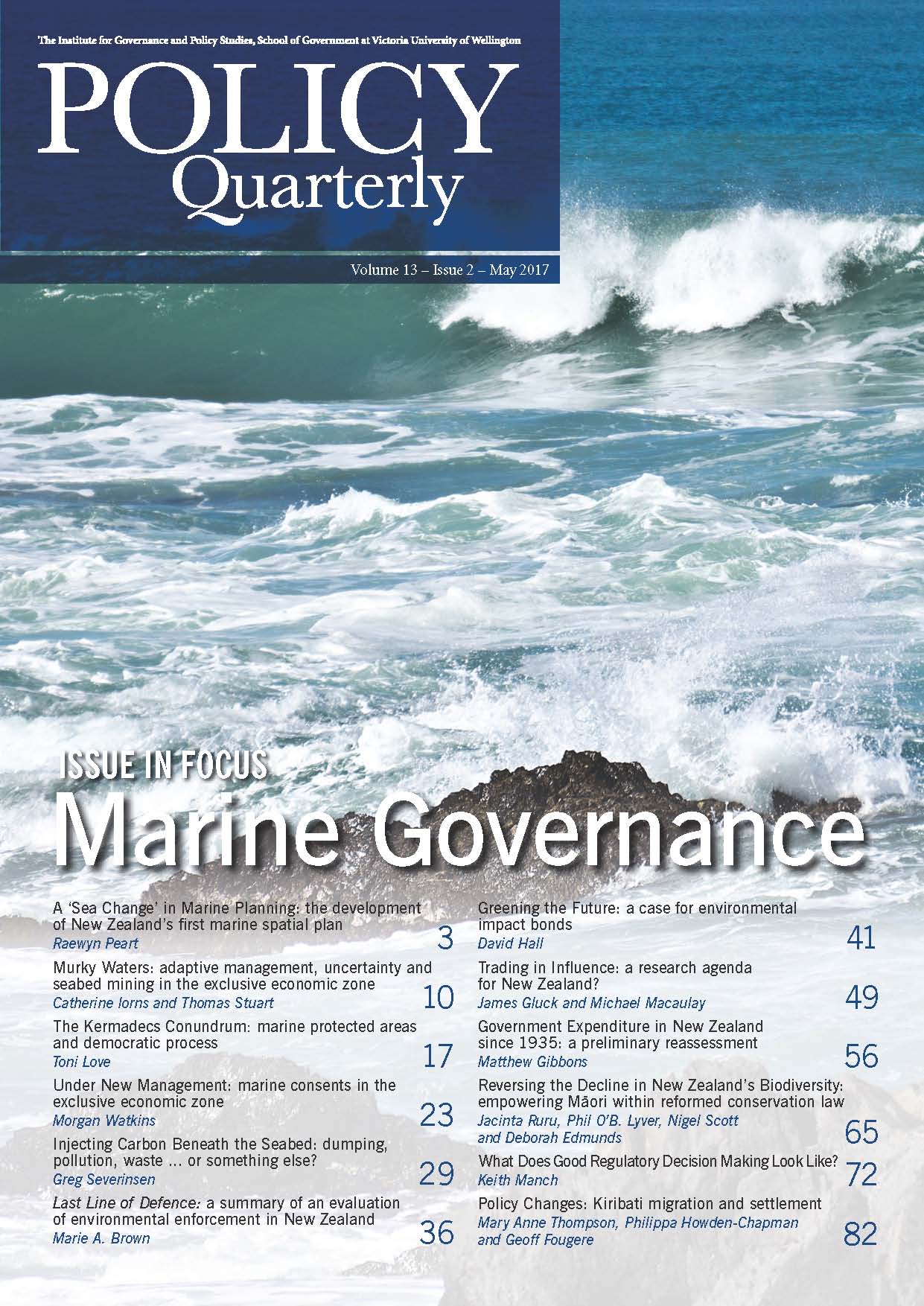A ‘sea change’ in marine planning: the development of New Zealand’s first marine spatial plan
DOI:
https://doi.org/10.26686/pq.v13i2.4658Keywords:
marine spatial planning, ecosystem-based management approach to the marine environment, mātauranga Māori, Sea Change Tai Timu Tai Pari project, Hauraki Gulf Marine Park Act, governance of the Hauraki Gulf, restoration of marine habitats, harvest management, marine protection, Hauraki Gulf ForumAbstract
Marine spatial planning is a well-established approach internationally, and has been used to assist in the application of an ecosystem-based management approach to the marine environment (Ehler and Douvere, 2009; Ehler, 2014). New Zealand’s first marine spatial plan was completed in December 2016. It was the result of a three-year Sea Change Tai Timu Tai Pari project which focused on addressing the growing spatial resource conflicts and ecological degradation associated with the Hauraki Gulf. The project was innovative in a number of respects, including: establishing a cogovernance structure; tasking a group of Mana Whenua (Hauraki Gulf iwi) and stakeholder representatives with producing the plan on a collaborative basis; addressing both catchment and marine issues in an integrated manner; and integrating mätauranga Māori and Western science.
Downloads
Downloads
Published
Issue
Section
License
Permission: In the interest of promoting debate and wider dissemination, the IGPS encourages use of all or part of the articles appearing in PQ, where there is no element of commercial gain. Appropriate acknowledgement of both author and source should be made in all cases. Please direct requests for permission to reprint articles from this publication to Policy-Quarterly@vuw.ac.nz.



